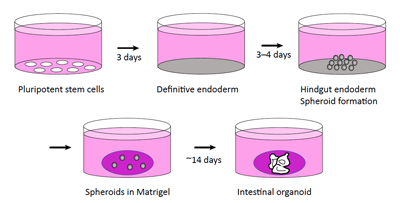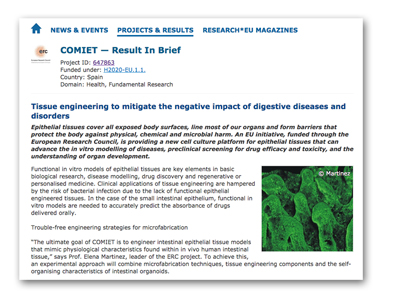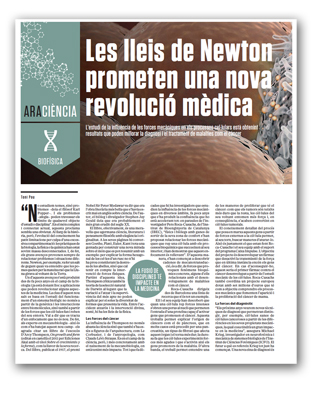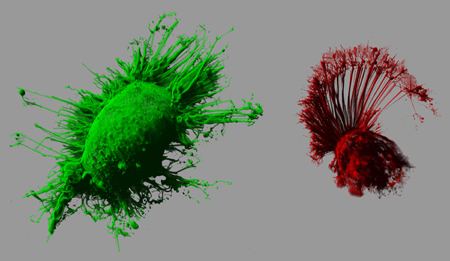Improving in vitro models to study the human intestine
 IBEC’s Biomimetic Systems for Cell Engineering group has published a review about possible new strategies to study drug absorption in the intestine in the high-ranking journal Trends in Molecular Medicine.
IBEC’s Biomimetic Systems for Cell Engineering group has published a review about possible new strategies to study drug absorption in the intestine in the high-ranking journal Trends in Molecular Medicine.
Together with their collaborators at the Universidade do Porto, Elena Martinez’s group examines the current state-of-the-art of cell-based intestinal models, which have been used for drug absorption and metabolism studies since the 1980s. However, current models, which use Caco-2 cells derived from human intestinal tumors, are not fully representative of the human small intestine.


 IBEC’s
IBEC’s 
 A ‘Results in Brief’ article about Elena Martinez’s ERC project COMIET has been published on the CORDIS website, the EC’s Community Research and Development Information Service.
A ‘Results in Brief’ article about Elena Martinez’s ERC project COMIET has been published on the CORDIS website, the EC’s Community Research and Development Information Service.
 IBEC group leaders Pere Roca-Cusachs and Elena Martinez featured in an article in Ara magazine at the weekend that discussed how understanding mechanical forces and their effect on cellular processes can open new avenues in the diagnosis and treatment of diseases such as cancer.
IBEC group leaders Pere Roca-Cusachs and Elena Martinez featured in an article in Ara magazine at the weekend that discussed how understanding mechanical forces and their effect on cellular processes can open new avenues in the diagnosis and treatment of diseases such as cancer.